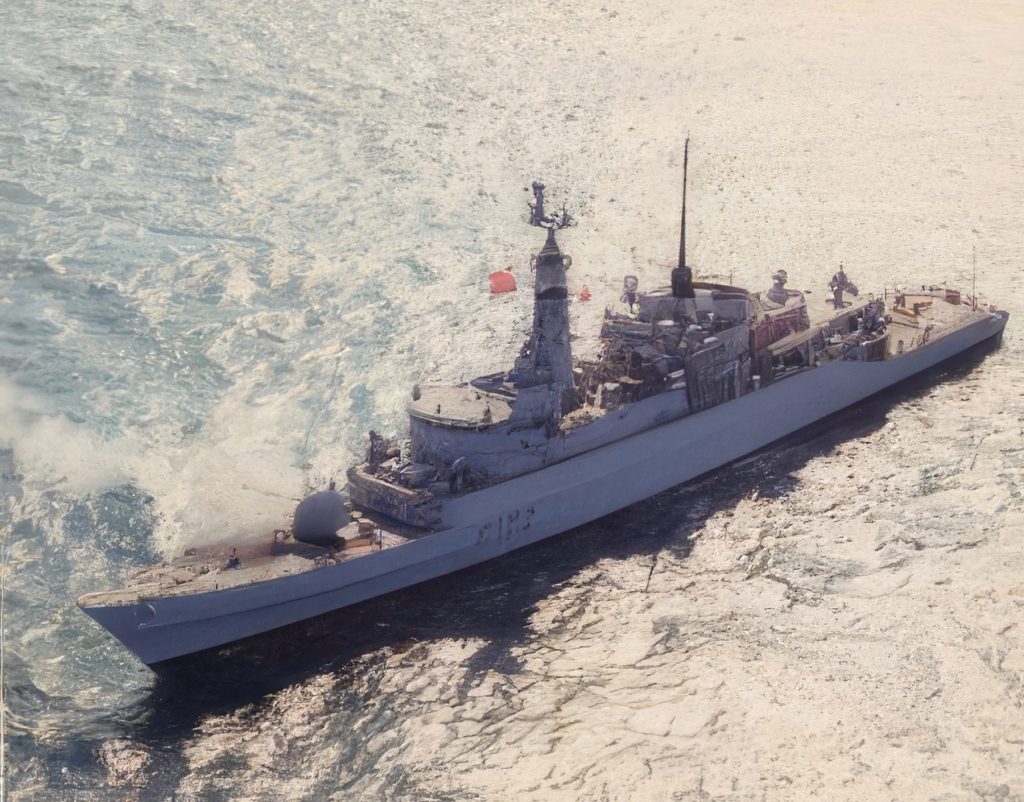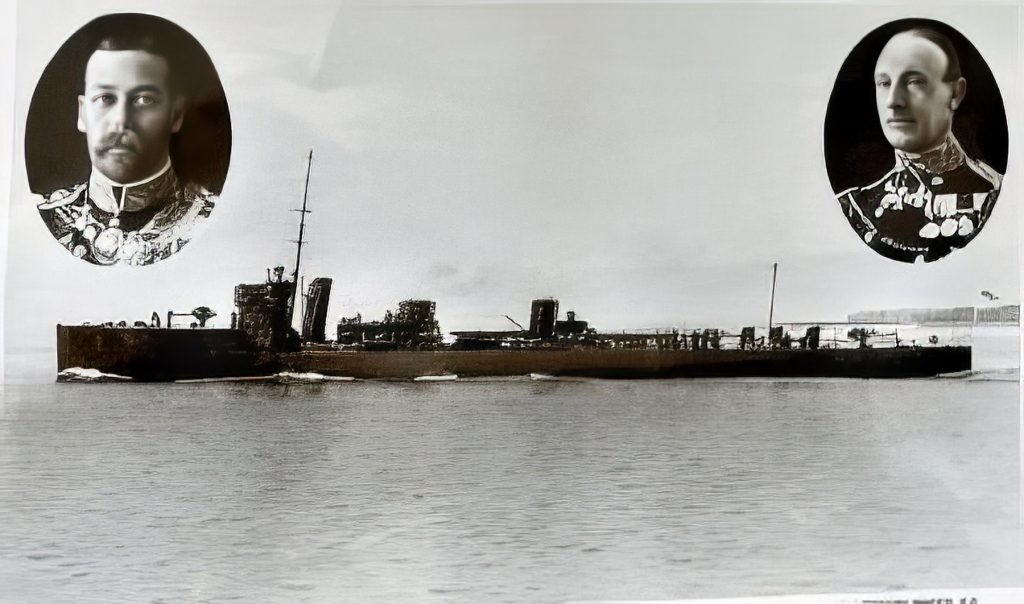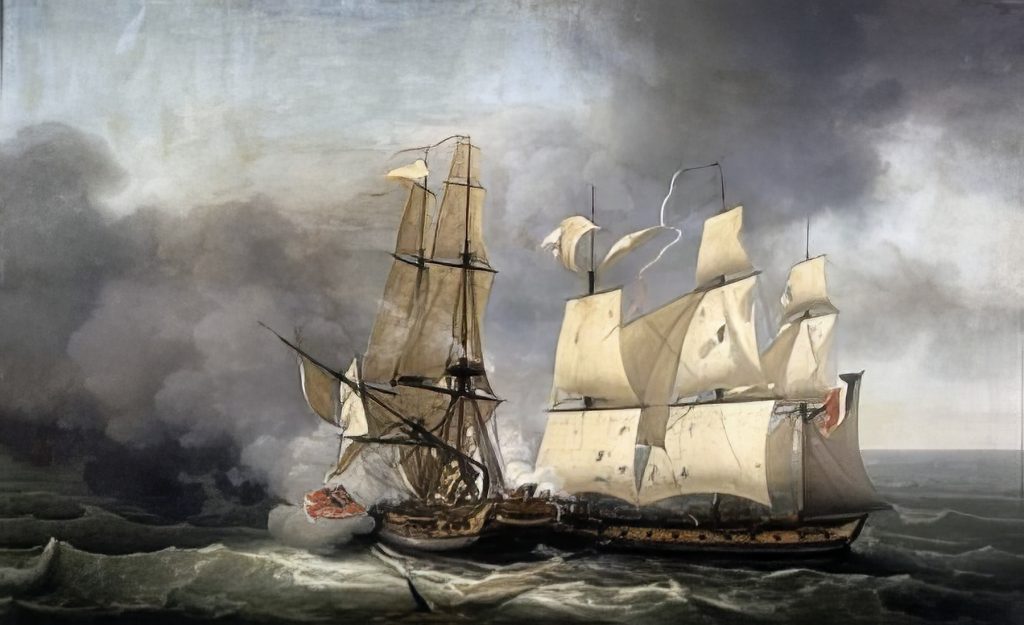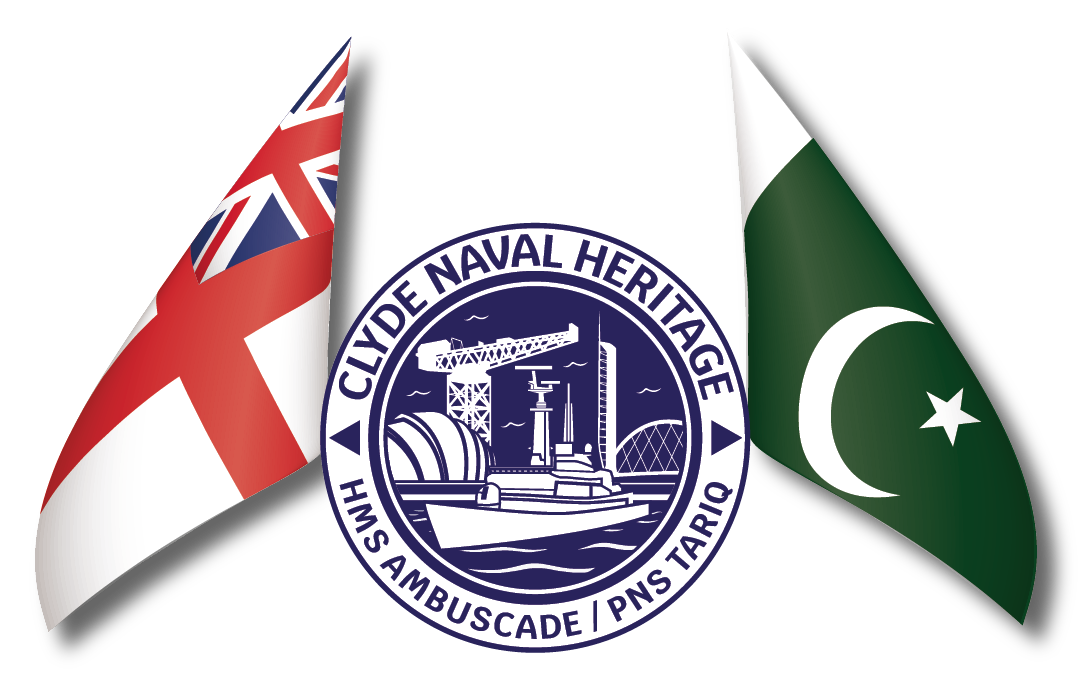HMS Ambuscade is the name given to eight (arguably nine) Royal Navy ships between 1746 and 1993. The final ship of that name (a Type 21 frigate) was sold to Pakistan in 1993 and renamed PNS Tariq. In 2023, the Pakistan Navy (Pākistān Bahrí’a) kindly agreed to donate the ship to the charity Clyde Naval Heritage. We plan to bring the ship back to the Clyde, where it was built, as a museum.
The word ‘ambuscade’ means ‘an ambush’, so it is no surprise that the name has been given to frigates or destroyers throughout its history in the Royal Navy.
HMS Ambuscade Today
The latest HMS Ambuscade is a Type 21 frigate launched in 1973 at Yarrow’s, Scotstoun. She was initially armed with one 4.5-inch gun, Seacat anti-aircraft missiles and two sets of triple torpedo tubes. A Westland WG-13 helicopter armed with air-to-surface missiles and anti-submarine torpedoes operated from the ship.
After deployments in the West Indies and the Pacific, HMS Ambuscade fought in the Falklands War of 1982. She served as an electronic warfare picket ship to the Task Force, taking part in several bombardments of Argentine positions.
HMS Ambuscade was sold to Pakistan in 1993 as PNS Tariq, based in Karachi. The modernisation included installing the Phalanx missile system, Mk. 36 SRBOC launchers, 20 mm and 30 mm guns. Deployments included patrolling off the Persian Gulf and Arabian Sea as well as deploying in the Mediterranean as part of the multinational military exercise with the U.S. Navy in 2005. After the Indian Ocean tsunami in 2004, Tariq was deployed on a search-and-rescue mission to the Maldives, where she rescued 377 tourists. She was decommissioned in 2023.


Second World War
In the Second World War, HMS Ambuscade was a modified W Class destroyer launched at Yarrow’s, Scotstoun, in 1926. She was initially armed with four 4.7-inch guns and six 21-inch torpedo tubes.
In wartime, she served in the Home Fleet and took part in the attempt to evacuate troops of the 51st (Highland) Division from France in 1940 after Dunkirk. After repairs, Ambuscade was based in Iceland for convoy escort, including Arctic convoys to Russia. She finished the war testing new anti-submarine weapons and was scrapped in 1946.
First World War
During the First World War, HMS Ambuscade was an Acasta/K-class destroyer armed with three quick-firing 4-inch guns and two 21-inch torpedo tubes. She was the first Ambuscade built in Glasgow at John Brown’s, Clydebank. She was launched in 1913 and initially operated out of Portsmouth before transferring to the Grand Fleet as part of the Fourth Destroyer Flotilla. At the Battle of Jutland in May 1916, HMS Ambuscade was jointly accredited with sinking the German cruiser Rostock with a torpedo. She went on to serve in the Dover Patrol, protecting the sea lanes to France. She was scrapped in 1921.


The Age of Sail
The first British-built HMS Ambuscade was a 32-gun fifth-rate Amazon class frigate of the Royal Navy, built at Deptford in 1773.
She fought in the American Revolutionary War (1775-83), capturing three American privateers and several merchant ships carrying supplies. Back in European waters in 1779, she captured the French corvette Hélène, the French privateer Le Prince de Montbray. Later in the war, Ambuscade supported the relief of Gibraltar (1781) and captured three French privateers the following year.
During the French Revolutionary and Napoleonic Wars (1792-1815), HMS Ambuscade served in the West Indies, capturing the French privateer schooner Le Buonaparte on 4 June 1796. Disaster struck when HMS Ambuscade was captured by the French in 1798 after an onboard explosion. She was then recaptured by HMS Victory in 1803 and served in the West Indies and the Mediterranean, where she was used in many diplomatic and secret missions under Captain William Durban. She was scrapped in 1810.
When HMS Ambuscade was captured in French service, the name was given to a captured French frigate, Embuscade, on 12 October 1798. She served in home waters and on convoy duties until paid off in 1800. There was also another very short-lived HMS Ambuscade in this period. The 32-gun Dutch frigate Embuscade, was captured by the Royal Navy on 30 August 1799. Initially added as Ambuscade, but renamed Helder on 25 March 1803. The final HMS Ambuscade of the Napoleonic Wars was formally Pomone, a French frigate captured near Corfu on 29 November 1811. She was briefly added to the Royal Navy as HMS Ambuscade, although she was never brought into service.
And that was almost it for Ambuscade in the age of sail. However, in May 1828, a 36-gun sail-powered frigate was ordered from Woolwich Dockyard as HMS Ambuscade. Sadly, she was renamed in March 1831 as HMS Amphion and then redesigned as a screw-propelled frigate.
The First HMS Ambuscade
The first HMS Ambuscade was a 40-gun frigate of the Royal Navy. Formerly, the French ship Embuscade, launched in 1745 at Le Havre, captured in April 1746 in the English Channel. The design worked so well that it set a precedent for the Royal Navy frigates of the 1750s. The first commander was Captain Lucius O’Brien.
HMS Ambuscade was at the First Battle of Cape Finisterre on 14 May 1747 during the War of the Austrian Succession. In the Seven Years War (1756-1763), HMS Ambuscade served in the Mediterranean, capturing the French privateer Le Vainqueur (24) on 12 July 1757. Almost a year later, together with HMS Lyme, they destroyed La Rose (24). HMS Ambuscade was also at the Battle of Lagos (off southern Portugal) on 18/19 August 1759.
She was sold off in 1762 as a privateer, which was used to attack Spanish settlements in South America.


